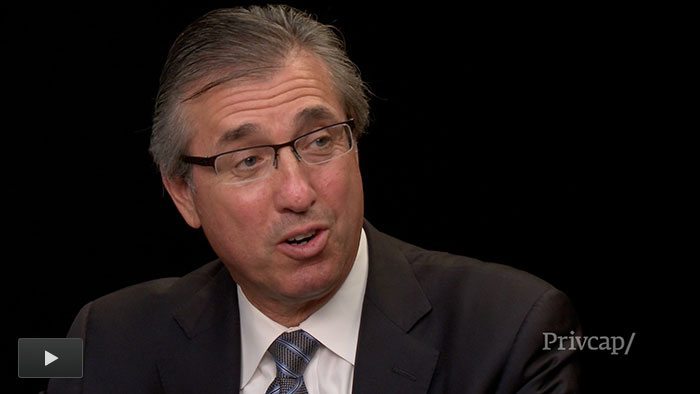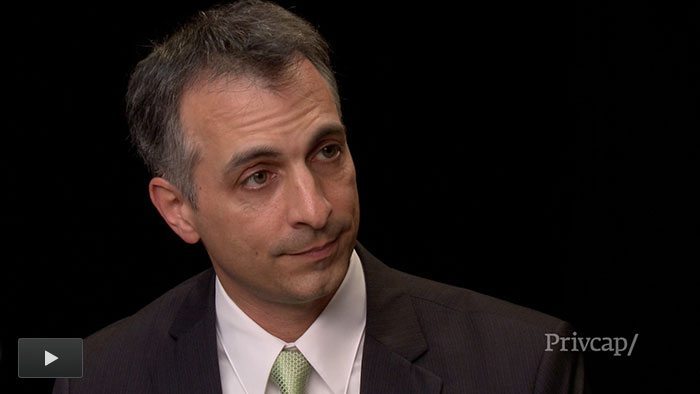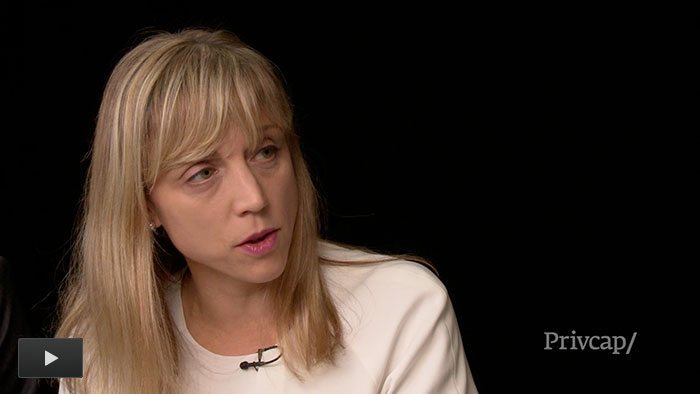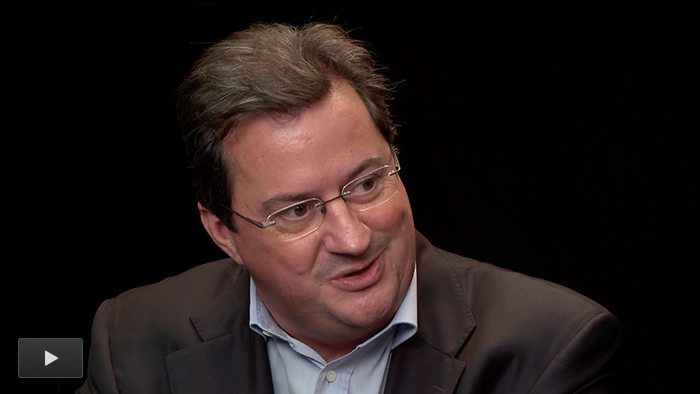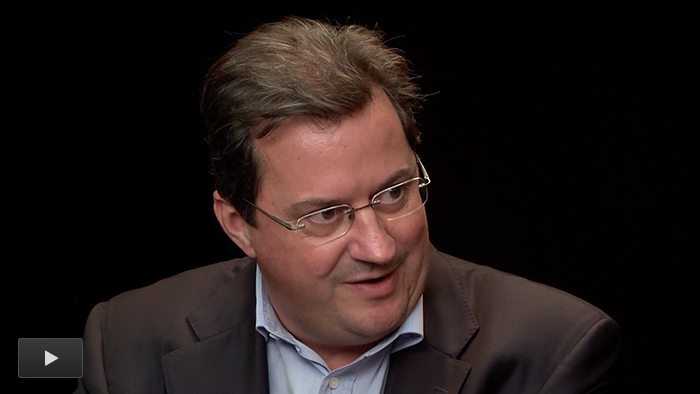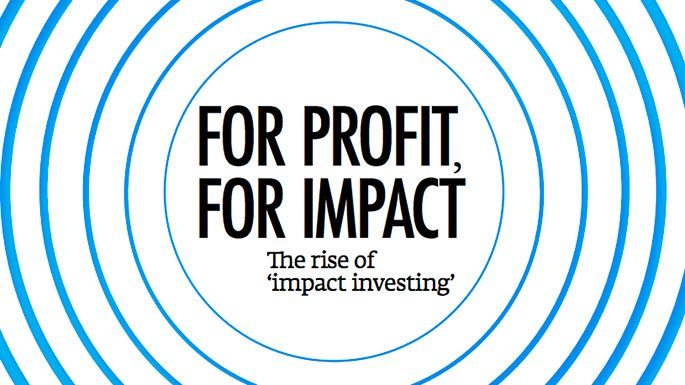Impact Capital: Where It’s From, Where It’s Going
Four veterans of impact investing compare views on its potential and the vexing debate on terminology and returns.
David Snow, Privcap: Let’s start with a question for Michael, who recently oversaw a WEF study on impact investing. Did you find that the term “impact”
is helping or hindering its growth?
Michael Drexler, WEF: I think the trouble historically with the term “impact” was that it was carrying this connotation of reduced or diminished financial returns: the idea that it’s a trade-off between social impact and financial return. And that’s what spooks a lot of the mainstream investors, particularly those who have a fiduciary duty, like pension funds.
Of course, you can construct an investment in such a way that there is a trade-off between financial and social impact. The classic examples of that would be where you run the for-profit enterprise and you cut off some of your profits into a foundation that then looks out for the social impact. And we think that’s one model of many, but not necessarily the only model in this space, and we believe that if done well, social impact can enhance economic returns.
Snow: Andreas, as you meet with many different investors who are interested in impact, what is the range of understanding that these investors have about the strategy? Do most of them expect a
financial return?
Andreas Ernst, UBS: It’s very heterogeneous. You will find that some of them – the more vocal ones who already have a very clear opinion of what impact investing is – will usually put more emphasis on the social side. And as Michael just alluded to, they believe that good, social impact equates to sub-optimal financial return.
On the other side you have investors that are less vocal, that are still about to make up their minds about how to allocate a part of their capital into investments with a proactive social impact. And these people would rather like to see investments that allow them to include “impact” in their investment portfolios.
Marcus Regueira, FIR Capital: I firmly agree with Andreas. Many investors have preconceived ideas either from a philanthropic side or the for-profit side. And these values, these interests reflect on their view of impact investing. One of the difficulties that we have had in terms of raising our fund is ignorance in a pure sense of the word – lack of knowledge. Some of them don’t realize what impact investing is and so there’s this education process before we can attempt to offer the product. This is a result of just how early-stage this industry is. And so as the industry consolidates, we will probably understand that impact investing is in everything in different forms, all the way from poverty alleviation to businesses that are directed toward a certain level of up-and-coming emerging low-income consumer.
Snow: Marcus, as you speak to potential investors, do you ever find that you’re talking to the regular-way private equity portfolio manager and, based on the lack of knowledge you mentioned, he tells you, “Oh, you guys should go talk to our non-profit group.”
Regueira: Absolutely. Some of the investors, because of their filters and preconceived ideas, allocate impact investing into little boxes. And so, yes, there is a bit of confusion and a bit of mix-up. But when the investors understand what you’re talking about in terms of not compromising, the impact-investing concept is immediately bought.
We have five or six of what we call anchor investors. All of them, of course, are DFIs or large institutional investors that already do impact investing. More and more, these folks are helping us to educate the financial-first investors.
Snow: A question for Will Galvin. As someone who is part of an organization that really follows the growth of enterprises from the ground level up, including very small agricultural operations in Africa, what is your view?
Will Galvin, Self Help Africa: There is something we need to say to begin with this concept of
impact investing: All investing has impact, okay?
What we’re getting to in this conversation is that there is an investment strategy that can have both the profit return and the social return, and you don’t need to trade one off against the other. But one of the things that we do struggle with quite a lot is, well, how do you measure impact? I talk about what we call the “doughnut challenge.” I can go and I can buy a dozen donuts for 10 bucks. And I can head into the street and hand them out to people. Okay, I’m being a little facetious, but I have impacted the lives of 10 people. And the fact that they may or may not have been hungry is neither here nor there.
There isn’t a single way of measuring impact that people can agree on. And I think that the investor community needs to be educated about this: What exactly is it that they wish to see in terms of an outcome for their investment? They need to be very clear in terms of the industry, and they need to be very clear in terms of the measurement. What are we measuring? What numbers are there? How robust is the data that is coming from the impact investment?
Somebody who chooses to go down the route of impact investing wants to see their money “do good.” There are so many different definitions of “doing good” that I think it helps if somebody, as they are going into the process, has a period of time where they are looking at the possibilities and the options.
Snow: Michael, do you sense that the range of ways to measure impact is a complicating factor in the growth of the asset class?
Drexler: Yes. I would very much agree with what Will just said. There currently are some good frameworks on measuring impact, namely the IRIS framework and the GIIRS [Global Impact Investing Rating System] rating. But they feel still very much like compliance mechanisms. And that’s something that both practitioners in the field and investors look at a little bit suspiciously. They say: Well, how does this help us define intent? How does this really mesh with the business plan? Or is it just a 90-item tick box that we have to go through in order to call ourselves impact investors.
What will need to happen is an evolution of those metrics that is much more tailored to the individual investment and how it actually meshes with the business plan.
Ernst: There is an element of cost. Costs are an issue and can also eat up some of the profits. Yes, reporting needs to be robust, it needs to be credible. But do all investors expect the same granularity of impact reporting? The parallel that I like to point out is the iPhone. The first generation of iPhone users really probably used 70 percent to 80 percent of all features, and today people are probably at 30 or 40 percent of all features. So we’re giving up a little bit of the features, but at the same time, we have the possibility of reaching many more people.
Galvin: One of the challenges is the spread-versus-depth issue. Very often investors are very happy when they see a top-line figure such as, you know, “Your investment has improved the lives of 500,000 people.” This is great. But for me, that’s a somewhat meaningless figure, because unless you get some data on to what extent it has improved the lives of those 500,000 people, it’s really worthless.
I think something that says, “You have increased the incomes of 10,000 people by 50 percent,” is much more valuable. The investor wants to see a return on his or her investment in terms of profit. Why shouldn’t he or she also want to see a return in capital terms, in pure hard cash terms, for the beneficiaries on the impact side?
I think a focus on income, on hard cash, is a very useful way of escalating it.
Snow: On to the subject of social-first versus finance-first investors. Isn’t the finance-first world tremendously larger? And to characterize impact capital as social-first, isn’t that preventing the expansion of an asset class because they’re speaking a language and using benchmarks that most investors do not understand?
Ernst: We shouldn’t forget that the concept of impact investing really was innovated in the foundation and non-profit world. They have some ownership and play a positive role ensuring that impact investing maintains the social element.
But yes, there is also a danger that… Closed societies speak and we use abbreviations and terms that the bigger outside world doesn’t understand.
Drexler: There is probably no such thing as a wrong narrative. It depends on the audience. The social-first narrative works well with investors who have that orientation. It of course doesn’t work well with financial-first investors that have a fiduciary duty. It’s not so much a question of the wrong narrative; it’s just what works for the audience.
It is possible to frame some form of impact investing around themes of access to frontier markets and better risk mitigation, because you’re much closer to the grass roots of society. If framed that way, it’s immediately a lot more appealing to a pension fund. It doesn’t mean it’s a right or a wrong narrative, because that narrative will be far less appealing to a philanthropist or a foundation.
Regueira: At the risk of oversimplifying here, the financial-first investor is more interested in output than outcome. Output measures numbers and is very similar to what financial-first investors look at. Outcome analysis and qualifying outcome analysis is really much more a social-first investor request than the financial-first investor request.
Snow: What is the bare minimum that an investment firm should do to call itself an impact investor? Set goals? Put impact plans in place?
Ernst: Every investment has a social impact, you know, either intentionally, unintentionally, either positive or negative. So I think for us it really boils down to intentionality. The intention needs to be there.
Regueira: I’ve been part of an impact-investing board at EMPEA [Emerging Markets Private Equity Association], and some of my colleagues asked if we should call it an impact-investing council or not.
We all have a deep interest in impact investing and how it can evolve. We want to bring impact investing to the mainstream. When we see that “impact” brings to mind a bias toward social-first investing, we see that impact investing isn’t really mature enough to be embraced by mainstream capital. In order to bring mainstream to impact investing, we will have to make it crystal clear in the minds of investors that the compromise between social and financial is not really important, that they are symbiotic.
The Experts
Andreas Ernst
Head of Impact Investing
UBS
Andreas Ernst runs the impact investing team for UBS and is part of the broader wealth-management platform serving ultra-high-net worth clients. Ernst and the team connect clients with impact investing third-party products, provides advisory services and run an exchange platform where clients can connect with investment and syndicate opportunities.
Marcus Regueira
Founding Partner
FIR Capital
Marcus Regueira is a founding partner at Sao Paulo-based FIR Capital. He was the President of ABVCAP, the Brazilian Private Equity and Venture Capital Association, from 2006 to 2008. Regueira is also founder and board member of Instituto Hartmann Regueira, a not-for-profit organization whose mission is the co-entrepreneurship of social investments with small- and medium-sized companies, and the development of its best management practices.
Will Galvin
Head of Operations, U.S.
Self Help Africa
Based in New York, Will Galvin is head of U.S. operations for Self Help Africa, a “pro-profit” organization which for thirty years has been promoting enterprise and business culture in rural Africa. Galvin was educated at Trinity College in Dublin. He spent two years working in emergency coordination in Africa with the Irish aid agency, GOAL. Before joining Self Help he practiced law in Dublin, specializing in criminal law and judicial review.
Michael Drexler
Senior Director,
Head of Investors Industries
World Economic Forum
Michael Drexler is a senior director at the World Economic Forum based in New York, where he oversees a community of institutional and private investors. He joined the Forum after nine years at Barclays, where he most recently was Managing Director and Global Head of Strategy, Commercial/Investment Banking and Wealth Management.
An expert roundtable distinguishes between social-first investors and financial-first investors.


